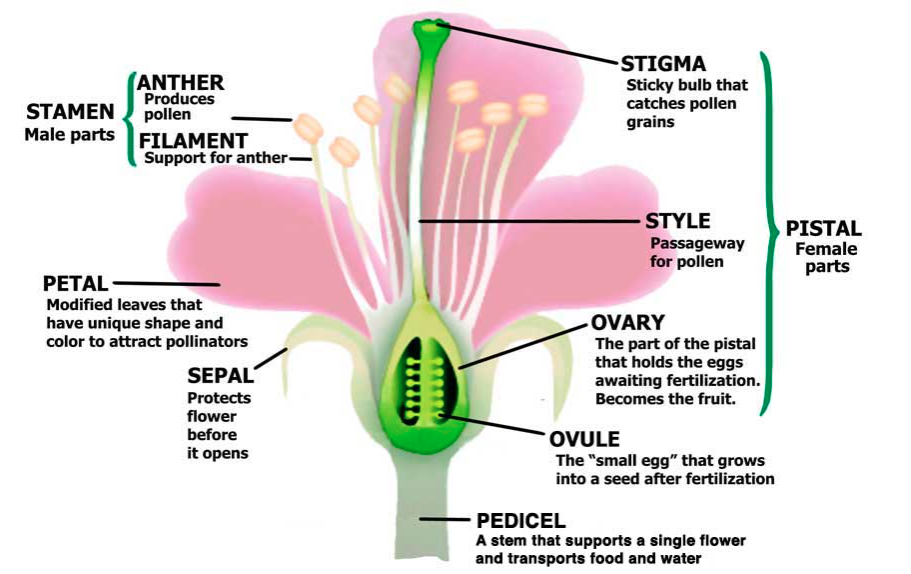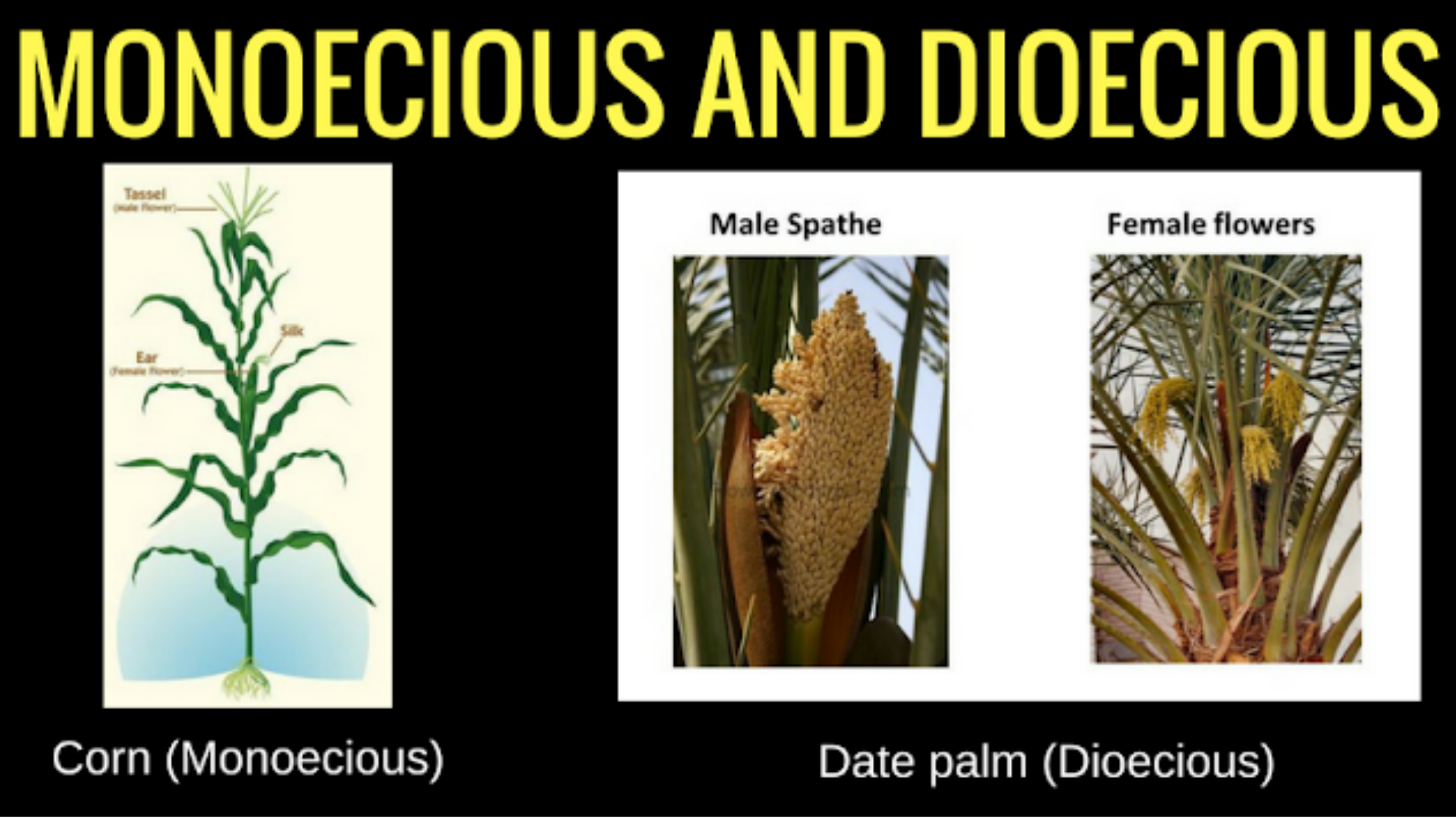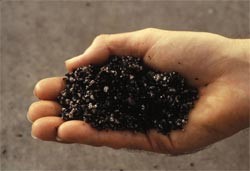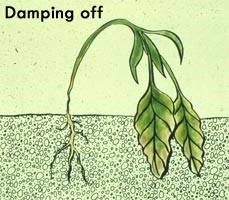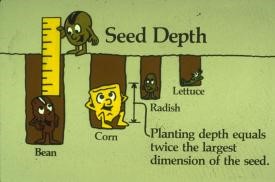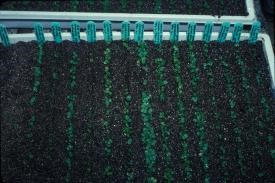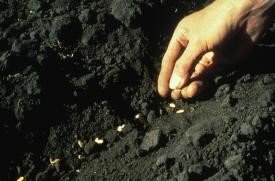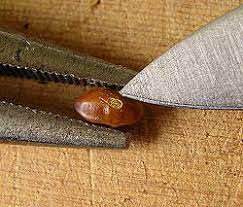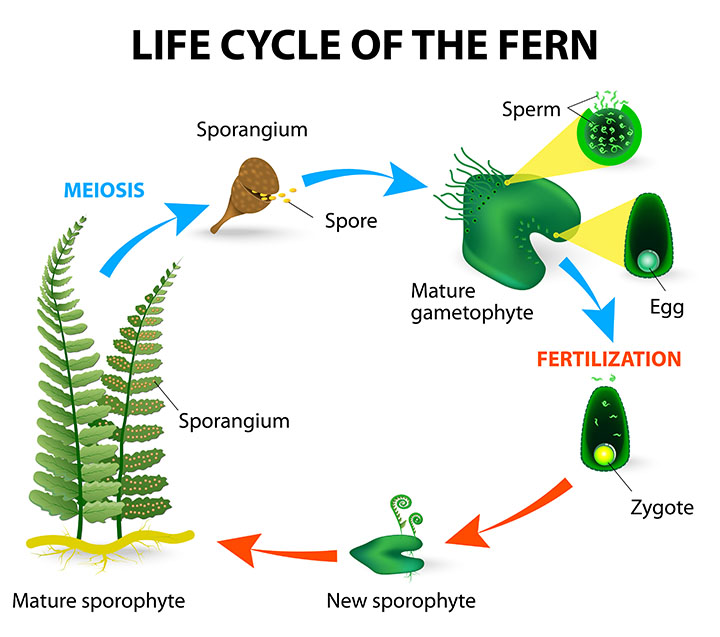Click here to view a video that explains sexual reproduction in plants.
Sexual propagation of flowering plants, as opposed to ferns and mosses, begins with flowering, followed by pollination, fertilization and seed production. Seeds are used in large-scale agriculture and forestry operations for growing wheat, corn, alfalfa and tree seedlings for reforestation projects. Propagation by seeds is also critical to many aspects of horticulture including the establishment of many turfgrasses, bedding plants, and a wide range of trees and shrubs, although propagation of many of these types of plants is not restricted to sexual propagation. Sexual propagation has several advantages when compared with asexual methods.
- It is generally the cheapest method.
- It generally requires the fewest skills, specialized equipment or facilities, and is thus the easiest method.
- Seed can be easily stored, often for several years, and still successfully germinated.
- Seeds are cheaply and easily shipped or transported around the world.
- If properly cleaned and stored, seeds are less likely to carry diseases.
Seedlings are likely to be genetically different from the parent plant – this may be desirable for research, breeding, plant selection and conservation work, but maybe undesirable in regards to other interests.
- Some disadvantages of using this method include:
- Some plants don’t produce life, (viable), seeds, and thus can not be grown this way.
- Seeds may take a long time to grow into mature plants.
- Seedlings are likely to be genetically different from the parent plants, and may not have the same desirable characteristics.
The genetic difference is often especially true for many cultivars and hybrids.
Click here to view a video that explains sexual reproduction in flowering plants.
Development of Seeds
The basic function of flowers is to be pollinated so seeds can develop, grow and perpetuate the species. It is obvious just by the casual observation that all flowers are not created equal, but flower types can be grouped in terms of their structure and how it relates to pollination and seed production.
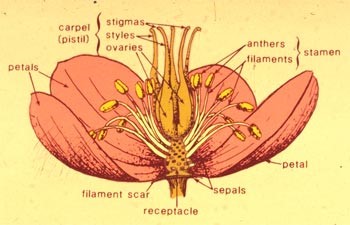
Perfect flowers are individual flowers that have both male and female parts. The male part of a flower is known as the stamen and is made up of the anther and the filament. The female part of the flower is known as the pistil and is composed of the stigma, style and ovary. Perfect flowers may have one or many stamens and pistils in each flower.
Imperfect flowers lack one or more of the parts that make up the stamen or pistil.
Some flowers contain only male or only female parts. When a plant develops separate male flowers, (staminate flowers), and separate female flowers, (pistillate flowers), and both occur on the same plant, the plant is referred to as monoecious. Examples of monoecious plants include corn, walnuts and many conifers. With corn, the tassels at the top of the plant are the male flowers, and the silks and young ear represent the female flowers.
Dioecious plants have separate pistillate and staminate flowers, but they are always on separate plants, thus you will have plants with only female flowers and others with only male flowers. Dioecious plants include hollies, date palm, asparagus and Ginkgo biloba. Male plants will never produce seeds or fruit. Females will only set fruit if a compatible male plant is nearby, neither male nor female plants will die if they are not close to each other, however.
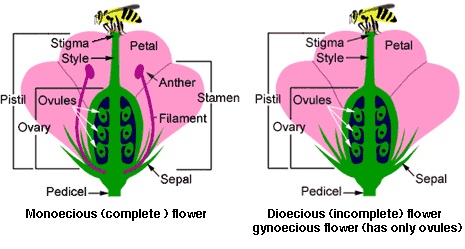
Pollination involves the transfer of pollen grains from the anther to the stigma. A variety of bees, butterflies, moths and birds are responsible for pollinating a wide range of plants. Flowers often attract pollinators by various characteristics such as colour and colour patterns, shape, fragrance, the offer of food, or, in the case of many orchids, resembling a potential mate for the would-be pollinator. Other plants rely on wind to carry the pollen grains. Conifers and grasses, including many of our grain crops, are wind-pollinated.
Once the pollen grain lands on a receptive stigma a pollen tube begin to grow down through the style to the ovary where fertilization occurs. Often there are many ovules (eggs) within the ovary. The ovary will develop into the fruit and each ovule will develop into a seed.
Growing Plants from Seed
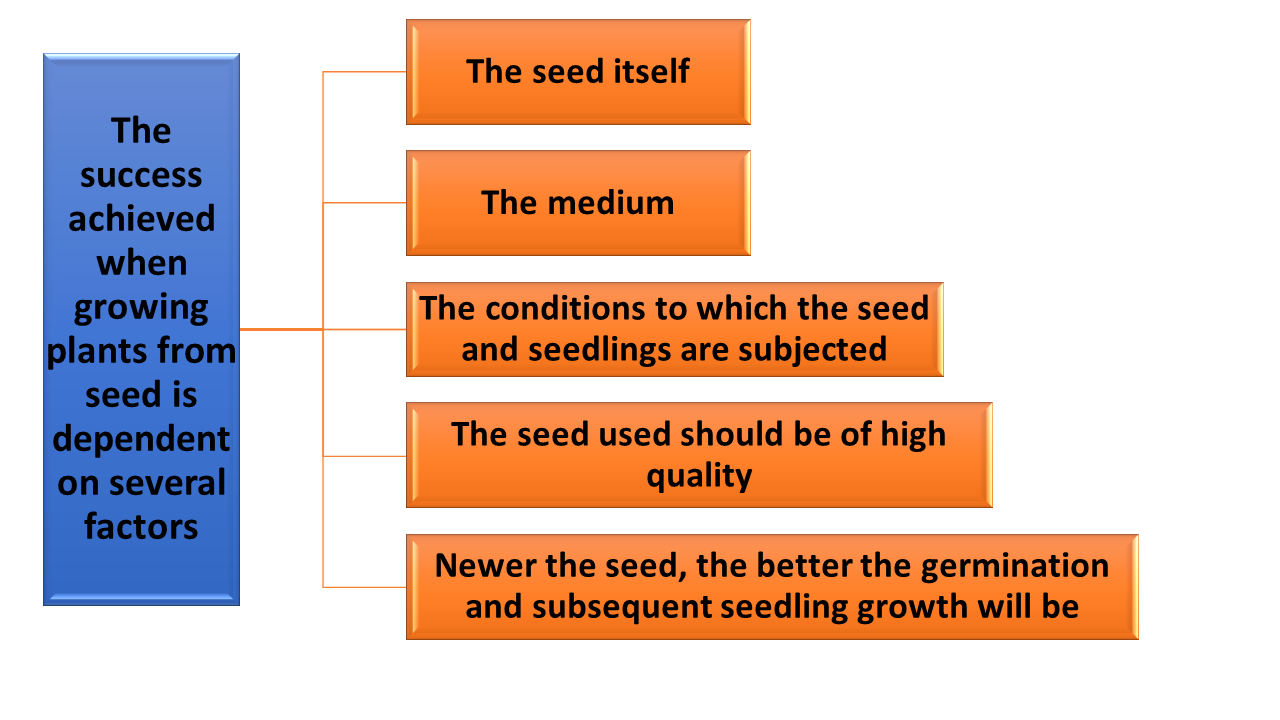
The medium refers to the soil into or onto which the seeds are sown. Whatever seed sowing mix is used, it should be free of weed seeds, harmful insects and pathogens that may prevent germination or kill the young seedlings.
A disease known as damping-off is one of the most troublesome problems encountered if soil and sowing containers are contaminated. The mix should also be free-draining and should not remain soggy after watering. There are several ingredients that can be used to create a suitable medium. Common components include peat moss, vermiculite (a mineral), perlite (a material of volcanic origin – often mistakenly identified as Styrofoam in soil mixes), sand, fine-milled bark, compost and milled sphagnum moss. Fortunately, there are several very good, bagged mixes available in garden centres, but as you experiment with growing various types of plants from seed you may prefer to mix your own special blend.
Click here to view a video that explains damping off.
The most common bagged mixes contain peat moss and vermiculite, and often a small amount of fertilizer to get the seedlings off to a strong start. Whatever seed mix is used, it need not be particularly rich in nutrients. It is much more important to have a mix with proper physical qualities. Once the seedlings are growing, attention can then be shifted to proper feeding with a dilute, water-soluble fertilizer if necessary.
Seeds can be sown into almost any type of container, but of course, clay or plastic pots or flats are logical choices. The pots or flats should be sterilized before use (a dilute solution of bleach and water works well), and there must be drainage holes to allow excess water to drain away. When sowing the seed, the surface of the media should be even, firm (but not compacted), and slightly moistened. The depth of planting will vary with the type of plant being grown.
A general rule is to plant the seed at a depth of one to four times the thickness of the seed. There are, however, some seeds that require light for germination and should be left uncovered, and just to keep you on your toes, there are others for which light can inhibit germination! This is one reason why it is wise to do a little background check on the seed you are about to sow, or at the very least, read the seed packet that often has much useful information.
Once sown, it is essential that the medium remains moist but not overly wet. Maintain the correct moisture level by placing seed pots in a plastic bag or a propagating case (creating an enclosed environment for high humidity) but keep a close eye on the temperature within. The widest range of the most commonly grown annual and biennial flowers, and vegetable plants germinate best between 65-75°F.
Depending on the seeds, germination will often occur within one to three weeks, but there are others that will take longer. Once the seedlings emerge, it is important that they receive good light, otherwise, seedlings will be spindly, weak and quite difficult to transplant. It is often a good idea to lower the temperature by 5-10°F which will slow growth but will help to keep the plants stocky.
Seeds of many plants, especially woody plants and perennials, have physical or chemical inhibitors within the seed that prevent the seed from germinating even if the proper medium, temperature and moisture levels are present. The good propagator has several techniques that will effectively overcome these natural barriers to germination. One such method is called stratification. This involves giving the seeds a moist, cool treatment. Frequently seeds are mixed with moist peat moss, vermiculite or sand, put in a plastic bag and placed in the refrigerator, (35-40°F), for a certain length of time – 90 days is a common duration.
Click here to view a video that explains stratification in successional agroforestry systems.
The process of soaking up water is known as imbibition and is the first step in germination. Certain seeds have hard, impervious seed coats that prevent water from being absorbed thus delaying germination.
Click here to view a video that explains the chilling imbibition injury in corn.
Scarification is a method often used to overcome this problem. Scarification involves wearing away at the seed coat to allow water into the embryo. This can be done mechanically with a file, piece of sandpaper, or by carefully nicking the seed coat with a knife. Some propagators dealing with large numbers of seed will use various acids to eat away at the seed coat, but this is a very refined technique in which great attention must be paid to the concentration of acid, and to the duration for which the seeds are soaked.
There are many other techniques and “tricks” that propagators employ to get certain seeds to germinate. Many plants that have adapted to habitats prone to fire have developed seeds that rely on fire as a precondition to germinating. Other seeds germinate only when a certain microorganism is present in the soil, or when a particular plant is already growing. With many South African plants, exposing the seed to smoke is beneficial or necessary to germination. As much as we know about seeds and how to grow them, there is still much that we do not fully understand. Until we have all the “recipes” for germinating seeds down to an exact science, a good basic knowledge of the techniques along with personal experience will go a long way in bringing success to your seed sowing efforts.
Click here to view a video that explains seed germination, scarification, stratification, and soaking.
Ferns from Spores
Ferns are one of the first groups of plants to be trendy. They were all the rage in Victorian times but have since quietly gone out of favour. That is, up until recently when there has been renewed interest in this diverse group of plants, largely from native plant enthusiasts. Ferns belong to a group of plants known as Pteridophytes which also includes mosses and others. In terms of plant classification, they are amongst the most primitive members of the plant kingdom. As a group, the pteridophytes are often referred to as the lower plants with flowering plants being known as higher plants. Ferns do not flower and thus do not produce seeds, but rather produce spores. Because of this, ferns have a distinctly different life cycle. Ferns typically produce a great abundance of spores that makes it possible to grow thousands of plants from a single, mature fern plant if the conditions are suitable.
To propagate ferns from spores, the spores must be ripe (just as with seed). The medium onto which spores should be sown can be the same as that used for seed sowing, although it is critical that it be sterile. Spores are dust-like, therefore sow them very sparsely, as it is very easy to sow too many! The pot containing the spores should go in a plastic bag and then be placed in a warm, bright spot, but not in direct sun. The humidity within the bag should remain high. The speed at which fern spores germinate varies greatly depending on the species. Check the bag frequently to make sure the pot doesn’t dry out. The first signs of life will be a green film developing on the surface of the medium. When this appears, mist the surface often. Gradually, young fern plants will begin to develop. When the young plants are large enough to handle easily, they can be transplanted to individual pots.
Many ferns can also be propagated using various asexual methods including division, bulblets, plantlets and micropropagation.
